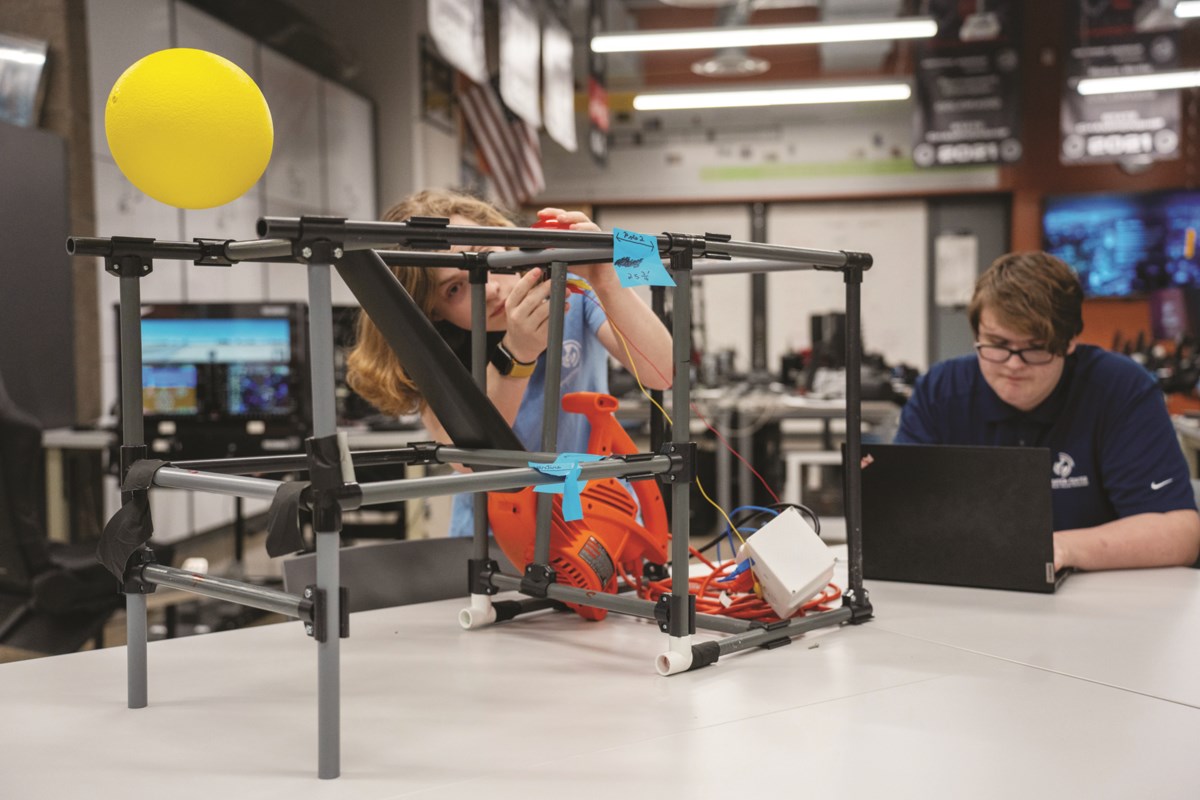
As you step into Brian Bianco’s PE class at Legacy Elementary School, you’re greeted by the sound of sneakers squeaking against the gym floor and the infectious laughter of students playing a game of tag. Among them is Cynthia Barger, a determined third-grader who embodies courage and the optimistic spirit of an eight-year-old fleeing from the dreaded ‘you’re it!’ tag. While students run from one side of the gym to the other, Cynthia glides across the gym floor in her wheelchair.
Across St. Vrain Valley Schools, the abilities of all students are recognized, celebrated, and supported to ensure that each and every child can participate and engage in their learning. For physical education classes, access for all students can present unique opportunities for innovation and collaborative partnerships.
To create a more inclusive and engaging environment for all students with special needs – St. Vrain offers Adapted Physical Education (Adapted PE). This specialized program is tailored to meet the unique needs of students like Cynthia to best support their active participation in PE class.
Over the years, Bianco has explored many opportunities to increase Cynthia’s participation in class. He has introduced lightweight objects for her to throw, experimented with different types of bowling-style ramps for underhand rolls, and has modified larger and lighter-weight equipment such as soccer balls and beach balls. As Cynthia grows and advances through the grade levels, Bianco is committed to continuous innovation so that the current interventions don’t become rudimentary.
“This year, I brainstormed initial ideas that I knew I could create myself in class for Cynthia, but I also recognized the opportunity for more innovative solutions,” shared Bianco. “I reached out to Kelsey Hargash, the district’s Adapted PE Teacher, for collaboration to elevate our solutions for Cynthia, ensuring not just her participation but also her safety.”
Pooling their creativity and determination, Bianco and Hargash worked alongside students from the Innovation Center to transform their idea to use robotics and technology into an effective design and prototype.
“Working together with students at the Innovation Center allowed us to think beyond the ordinary,” noted Hargash. “They took our initial ideas, like creating a robot arm that would have the ability to move in different positions, or a joystick so she could throw a ball, and expanded them into an Adaptive Smart Launcher – a more sustainable, impactful experience for Cynthia that goes beyond mere participation.”
The Socially Assistive Robotics (SAR) Team at the Innovation Center, composed of high school students from across the district who specialize in programming social robots for students with special needs took charge of the electrical engineering and prototype design. Additionally, students of the Innovation Center’s Machine Team also played a pivotal role in bringing the physical structure of the device to life. The Adaptive Smart Launcher prototype was created using PVC pipes, an electronic start button, and a leaf blower.
“Our aim was to create something tangible, something that would make an immediate impact on a student’s life,” shared Dillon Whisman, Mobile Lab Coordinator at the Innovation Center.
“While the original design took inspiration from a leaf blower, the Adaptive Smart Launcher goes beyond that basic concept. It’s a versatile tool with the potential to swing, launch, kick, and maybe even catch,” explained Jacob Roberts, Instructional Consultant for Game Design/Competitive Robotics at the Innovation Center. “We envisioned a device that not only supports a student’s immediate needs, but also opens the door to future adaptations, providing a customizable and engaging experience for students with varying abilities.”
On the first day of testing, Cynthia’s face lit up with curiosity and excitement as she approached the Adaptive Smart Launcher. Initially overcome by the loud hum of the leaf blower, her hesitance quickly disappeared with the first launch of the inflatable football. Her laughter and smile reflect the success of the team’s innovative prototype.
“We aspire to have a set of these devices at every feeder school – not just limited to PE, but also accessible during recess or other school activities,” stated Hargash. “This is just the beginning.”
